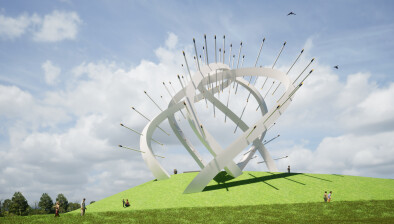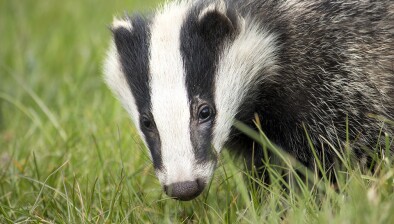And finally… Floral clock designed to honour Scotland’s architects

Edinburgh’s world-famous floral clock is to tick this year in honour of The Royal Incorporation of Architects in Scotland’s (RIAS) centenary.
The timepiece, located in Princes Street Gardens, was completed this week following more than a month of work by parks staff to plant over 35,000 individual flowers and plants.
Each year the clock, which was first created in 1903, celebrates a different individual, organisation or anniversary and since then has been inspired by the Girl Guides Association, the 100th anniversary of Robert Louis Stevenson’s death and its own centenary.
Both the Lord Provost, Donald Wilson, and Environment Convener, Councillor Lesley Hinds, watched gardeners make the finishing touches today.
Lord Provost Donald Wilson said: “The floral clock is a longstanding and popular addition to the city’s summer attractions and is as popular today as it was when it was first created in 1903.
“This year the clock celebrates The Royal Incorporation of Architects in Scotland, which has enjoyed a rich history and recognises the country’s forerunners in building conservation.”
Environment Convener, Councillor Lesley Hinds, said: “I am delighted to once again see the city’s beautiful floral clock completed, which I know will be enjoyed by the many thousands of people to pass by it this summer.”

The RIAS, based in Edinburgh, was founded in 1916 and is the professional body for all chartered architects in Scotland. As part of its centenary celebrations, the organisation held the Festival of Architecture 2016 – a Scotland-wide, year-long celebration involving more than 150 partner organisations.
Neil Baxter, Secretary of RIAS, said: “For many Scots, Edinburgh’s floral clock is a very special childhood memory. Visits to the Capital were always sure to have the clock on the itinerary. This clock represents the very best of Scottish horticulture, just as the RIAS promotes excellence in our architecture. It is a tremendous honour that this year’s clock marks the RIAS’ centenary.”
Floral clock fact file
The floral clock was first created in 1903 by the Edinburgh Parks Superintendent, John McHattie.
The clock takes two gardeners five weeks to produce, and is trimmed, weeded and watered by one gardener for the rest of the season.
The clock flowers from July until October.
Until 1972 the clock was operated mechanically, and had to be wound daily. From 1973 it was electrically driven.
The minute and hour hands measure approximately 2.4m and 1.5m respectively and when filled with plants, the large hand weighs approximately 36kg while the small weighs 22.7kg.
The clock itself is 3.6m wide, with a circumference of 11m.
Plants vary each year but some of the more commonly used varieties include Lobelia, Pyrethrum, Golden Moss and succulents such as Echeveria and Sedum.

















